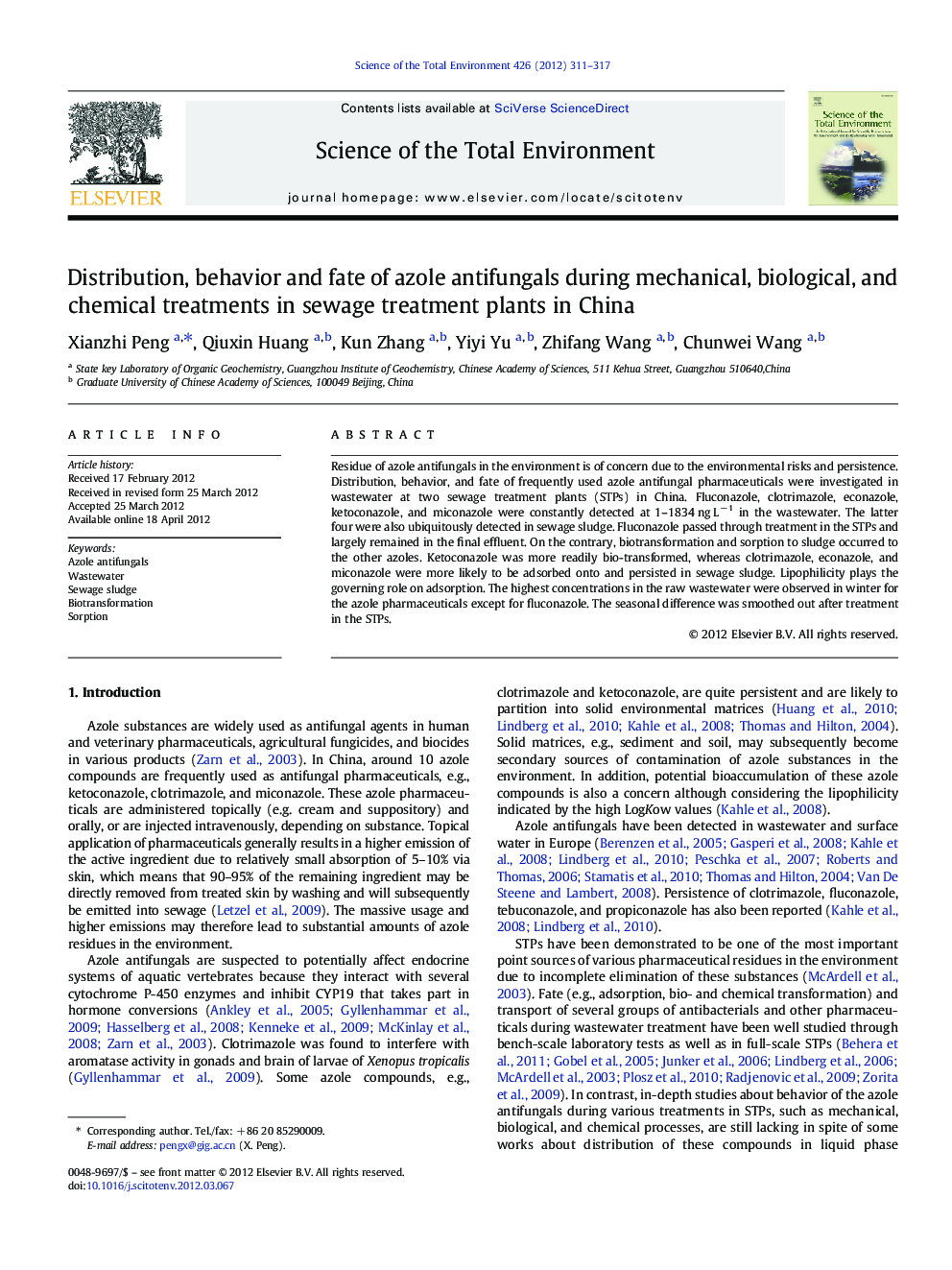| Article ID | Journal | Published Year | Pages | File Type |
|---|---|---|---|---|
| 4429484 | Science of The Total Environment | 2012 | 7 Pages |
Residue of azole antifungals in the environment is of concern due to the environmental risks and persistence. Distribution, behavior, and fate of frequently used azole antifungal pharmaceuticals were investigated in wastewater at two sewage treatment plants (STPs) in China. Fluconazole, clotrimazole, econazole, ketoconazole, and miconazole were constantly detected at 1–1834 ng L− 1 in the wastewater. The latter four were also ubiquitously detected in sewage sludge. Fluconazole passed through treatment in the STPs and largely remained in the final effluent. On the contrary, biotransformation and sorption to sludge occurred to the other azoles. Ketoconazole was more readily bio-transformed, whereas clotrimazole, econazole, and miconazole were more likely to be adsorbed onto and persisted in sewage sludge. Lipophilicity plays the governing role on adsorption. The highest concentrations in the raw wastewater were observed in winter for the azole pharmaceuticals except for fluconazole. The seasonal difference was smoothed out after treatment in the STPs.
► Azole antifungals are widely present in wastewater of China. ► Fluconazole passed through treatments and largely remained in the final effluent. ► Ketoconazole was more readily bio-transformed. ► Clotrimazole, econazole, and miconazole were more likely to be adsorbed to sludge. ► Lipophilicity plays the governing role on adsorption.
